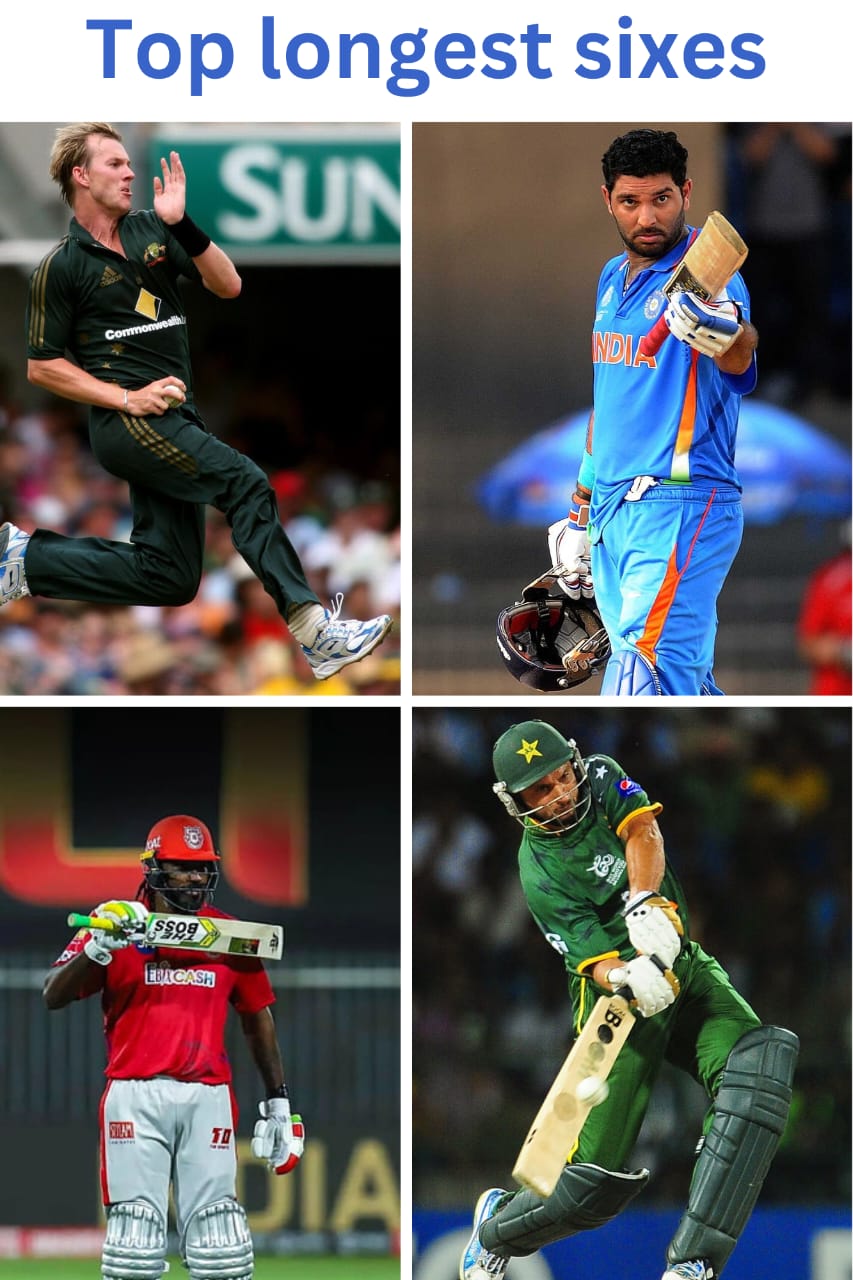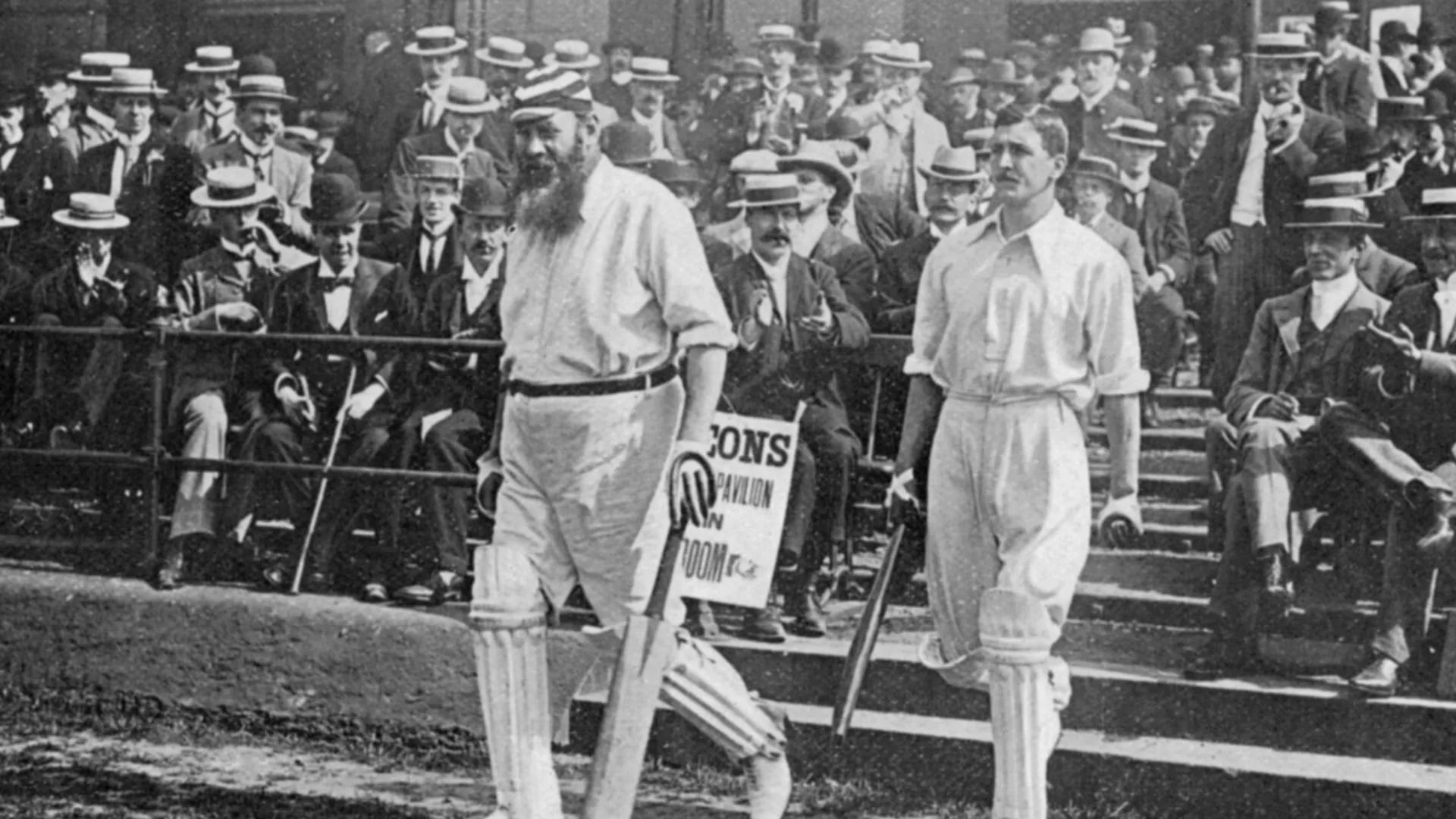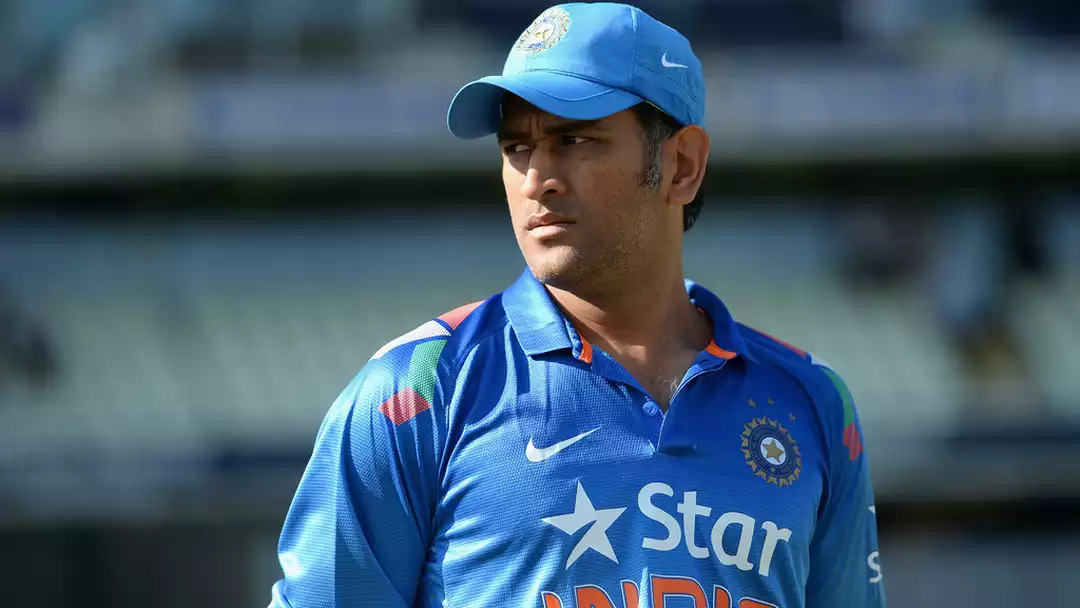Longest Six In Cricket History
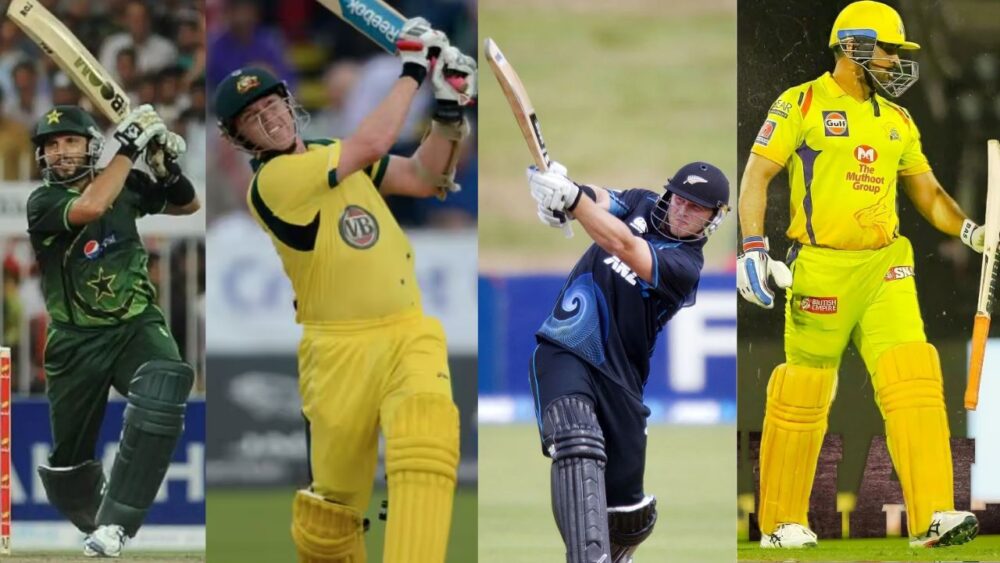
Cricket, a game of finesse and skill, also holds a special place for power hitters who can send the ball soaring out of the park. Among the many feats celebrated in cricket, hitting the longest six remains one of the most thrilling and memorable. Over the years, numerous cricketers have showcased their ability to clear boundaries with massive hits, but the quest to determine the longest six in cricket history has generated much debate and excitement.
Shahid Afridi’s Monumental Six

When discussing the longest sixes in cricket, Shahid Afridi’s name inevitably comes up. The Pakistani all-rounder, known for his explosive batting style, is often credited with hitting one of the longest sixes in cricket history. In 2013, Afridi launched a monstrous six against South Africa’s Ryan McLaren, which was measured at approximately 158 meters. This incredible feat took place in Johannesburg and remains a significant highlight of Afridi’s illustrious career.
The Background
The KCA Centenary Tournament, held in October 1996, was a quadrangular series featuring Pakistan, Sri Lanka, South Africa, and the home team Kenya. Shahid Afridi, then a 16-year-old unknown leg-spinner, had been called up to the Pakistan squad as a replacement for the injured Mushtaq Ahmed. Little did anyone know that this young cricketer was about to make history.
Pakistan vs. Sri Lanka
On October 4, 1996, Pakistan faced Sri Lanka in Nairobi, Kenya. Sri Lanka, having won the toss, elected to bat first and set a formidable target of 259 runs. Afridi, making only his second One Day International (ODI) appearance, was sent in to bat at the number three position. What followed was a display of explosive batting that would etch Afridi’s name into the annals of cricket history.
Record-Breaking Innings
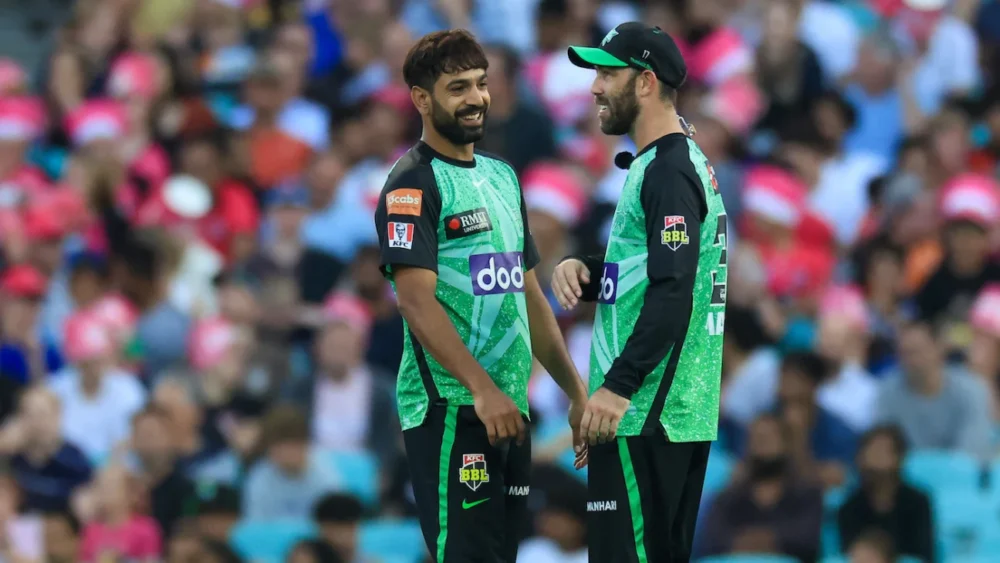
Afridi announced his arrival on the international stage in the grandest manner possible. He scored a blistering 102 runs off just 37 balls, including 11 sixes and 6 fours. His century, coming off 37 balls, set a new world record for the fastest century in ODIs at the time, a record that stood for over 17 years.
- Aggression and Flair: Afridi’s innings was characterized by aggressive stroke play and fearless hitting. His ability to clear the boundary with ease left the Sri Lankan bowlers helpless and the crowd in awe.
- Key Partnerships: Afridi’s partnership with opener Saeed Anwar was crucial. Their 126-run stand in just 10.4 overs laid the foundation for Pakistan’s successful chase. Afridi’s relentless assault on the bowlers ensured that the required run rate was always within reach.
- Impact on the Game: Afridi’s explosive century not only helped Pakistan to a seven-wicket victory with more than 15 overs to spare but also signaled the arrival of a new cricketing phenomenon. His aggressive batting style and ability to change the course of the game single-handedly became his trademark.
The Aftermath and Legacy
Shahid Afridi’s performance in this match not only earned him the Man of the Match award but also established him as one of the most exciting talents in world cricket. His record-breaking century brought him instant fame and recognition, making him a household name in Pakistan and beyond.
- Career Impact: This innings was a precursor to Afridi’s illustrious career. He went on to become one of the most feared batsmen in limited-overs cricket, known for his ability to play match-winning knocks and his charismatic presence on the field.
- Inspirational Figure: Afridi’s fearless approach and explosive batting style have inspired countless young cricketers in Pakistan and around the world. He became a symbol of aggressive cricket and is remembered for his ability to entertain and engage fans with his dynamic performances.
Brett Lee’s Unexpected Power

Another remarkable instance of a long six came from an unexpected quarter—Australian fast bowler Brett Lee. Known more for his pace than his batting, Lee stunned spectators during a Test match against the West Indies in 2005. Facing Darren Powell, Lee struck a massive six that reportedly traveled around 143 meters, proving that even bowlers can hit colossal sixes when the opportunity arises.
The Context: The 2005 Ashes Series
The 2005 Ashes series between England and Australia is widely regarded as one of the most thrilling and closely contested Ashes series in cricket history. With the Ashes urn at stake, both teams were determined to claim victory in what promised to be an intense battle of cricketing prowess.
The Match: Fourth Test at Edgbaston
The fourth Test of the series, played at Edgbaston, Birmingham, was a crucial encounter with the series tied at 1-1. Australia, led by captain Ricky Ponting, needed a victory to regain the momentum and take the lead in the series. Brett Lee, as one of Australia’s premier fast bowlers, had a pivotal role to play in Australia’s quest for victory.
Lee’s Heroic Performance
In the first innings of the match, Brett Lee delivered a performance that showcased his skill, determination, and never-say-die attitude. Bowling with sheer pace and aggression, Lee tore through the English batting lineup, claiming a sensational 6-wicket haul for just 75 runs. His fiery spell of fast bowling included the prized wickets of key English batsmen, swinging the momentum in Australia’s favor.
Crucial Contributions with the Bat
Not content with just his bowling heroics, Brett Lee also made valuable contributions with the bat in Australia’s first innings. Coming in at number 10, Lee showcased his batting prowess by scoring a crucial 43 runs, which included some powerful strokes and aggressive batting. His partnership with Michael Kasprowicz helped Australia post a competitive total, laying the foundation for their eventual victory.
Impact on the Outcome

Brett Lee’s outstanding performance with both bat and ball played a pivotal role in Australia’s victory in the fourth Test at Edgbaston. His lethal bowling and crucial runs helped Australia secure a nail-biting 2-run victory over England, giving them a crucial lead in the series. This victory proved to be a turning point in the series, with Australia eventually reclaiming the Ashes urn.
Legacy and Recognition
Brett Lee’s heroic performance in the 2005 Ashes Test at Edgbaston cemented his status as one of the finest fast bowlers of his generation. His ability to deliver match-winning performances under pressure showcased his skill, determination, and commitment to the team’s success. Lee’s contribution to Australia’s victory in the Ashes series remains etched in cricketing folklore, earning him widespread admiration and respect from cricket fans around the world.
Chris Gayle’s Towering Hits

Chris Gayle, the West Indian powerhouse, is synonymous with big hitting in cricket. Gayle’s ability to clear boundaries with ease is legendary. During an Indian Premier League (IPL) match in 2013, playing for the Royal Challengers Bangalore, Gayle smashed a delivery from Pune Warriors’ Ashok Dinda for a six that was estimated to be 119 meters. Though not the longest in history, Gayle’s consistent ability to hit long sixes has earned him a reputation as one of the most fearsome hitters in the game.
The Context: 2015 Cricket World Cup
The 2015 Cricket World Cup held in Australia and New Zealand was a showcase of cricketing excellence, with teams from around the globe vying for the prestigious trophy. West Indies, led by Chris Gayle, entered the tournament with high hopes and aspirations of lifting the World Cup trophy for the third time in their history.
The Match: West Indies vs. Zimbabwe
In the quarterfinal match against Zimbabwe at the Manuka Oval in Canberra, Australia, Chris Gayle delivered a masterclass in power-hitting that left cricket fans around the world in awe. Batting first, Zimbabwe posted a respectable total of 289 runs, setting a challenging target for the West Indies to chase down.
Gayle storm Hits Canberra
Chris Gayle, opening the innings for the West Indies, produced one of the most devastating displays of batting ever witnessed in a World Cup match. With brutal force and impeccable timing, Gayle tore apart the Zimbabwean bowling attack, dispatching the ball to all corners of the ground with effortless ease.
Record-Breaking Century
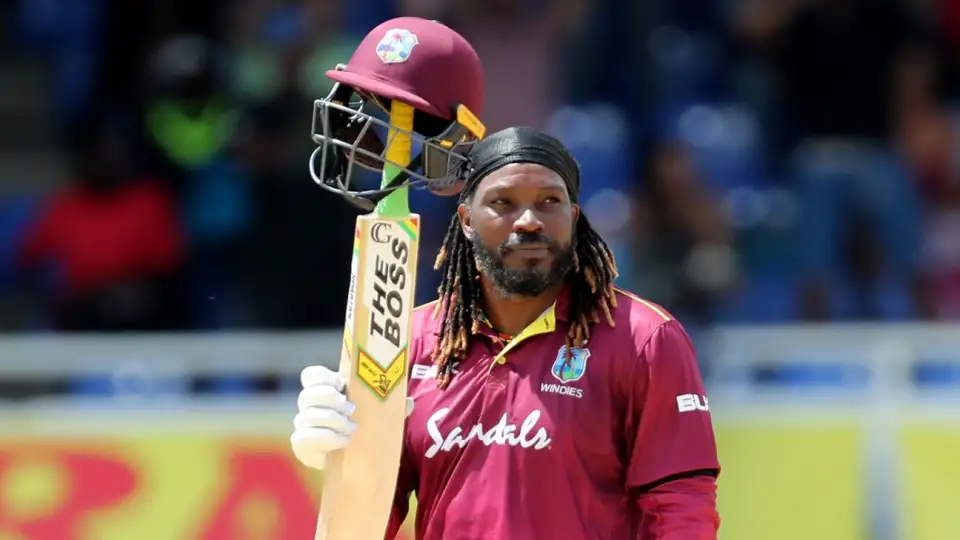
Gayle’s innings was nothing short of spectacular, as he bludgeoned his way to a breathtaking century. His 147 runs off just 97 balls included 16 monstrous sixes and 10 boundaries, setting a new record for the most sixes in a World Cup innings. Gayle’s century propelled the West Indies to a commanding position in the run chase, putting the game beyond Zimbabwe’s reach.
Impactful Contribution
Chris Gayle’s scintillating century not only powered the West Indies to victory but also showcased his ability to single-handedly dominate opposition bowling attacks. His innings was a perfect blend of power, precision, and entertainment, captivating fans and pundits alike.
Legacy and Recognition
Gayle’s innings in the 2015 World Cup quarterfinals solidified his reputation as one of the most destructive batsmen in the history of the game. His ability to change the course of a match with his explosive batting earned him widespread acclaim and admiration from cricket enthusiasts worldwide. Gayle’s performance in this match will be remembered as one of the defining moments of his illustrious career.
Martin Guptill’s Spectacular Strike

New Zealand’s Martin Guptill is another cricketer known for his powerful hitting. During a One Day International (ODI) match against South Africa in 2012, Guptill launched a six off Lonwabo Tsotsobe that was measured at 127 meters. This incredible strike highlighted Guptill’s strength and timing, adding his name to the list of cricketers capable of hitting massive sixes.
The Context: 2015 Cricket World Cup
The 2015 Cricket World Cup, co-hosted by Australia and New Zealand, was a thrilling spectacle of cricketing excellence. New Zealand, led by Brendon McCullum, entered the tournament with high expectations and a formidable team capable of competing with the best in the world.
The Match: New Zealand vs. West Indies
In the quarterfinal match against the West Indies at Wellington’s Westpac Stadium, Martin Guptill produced a breathtaking innings that would go down in cricketing folklore. Batting first, New Zealand posted a daunting total of 393 runs, setting a challenging target for the West Indies to chase.
Guptill’s Record-Breaking Knock

Martin Guptill, opening the innings for New Zealand, played an innings of unparalleled brilliance, which left the West Indian bowlers hapless and the crowd in awe. Guptill’s monumental 237* runs off just 163 balls included an astonishing 24 boundaries and 11 towering sixes.
Setting Records Ablaze
Guptill’s innings was not only a masterclass in power-hitting but also rewrote the record books. His double century was the highest individual score in a Cricket World Cup match at the time, surpassing the previous record held by Chris Gayle. Guptill’s onslaught propelled New Zealand to a mammoth total and put the match firmly in their control.
Impact on the Outcome
Martin Guptill’s monumental innings played a pivotal role in New Zealand’s victory in the quarterfinal match against the West Indies. His blistering knock provided the foundation for New Zealand’s dominant performance, securing a convincing 143-run victory and a place in the semifinals of the World Cup.
Legacy and Recognition
Guptill’s innings in the 2015 Cricket World Cup quarterfinals solidified his reputation as one of the most destructive batsmen in modern cricket. His ability to decimate opposition bowling attacks with his aggressive stroke play and impeccable timing earned him widespread acclaim and admiration from cricket fans around the world.
The Debate on Distance Measurement
The measurement of six distances in cricket often involves a degree of estimation, and the exact distances can sometimes be disputed. Factors such as altitude, ground dimensions, and even the technology used to measure the hits can influence the reported distances. Despite these challenges, some sixes have been universally recognized for their extraordinary length.
Technological Advances and Modern Power
With advancements in cricket technology and the increasing athleticism of modern players, hitting long sixes has become more common. Bats have also evolved, with modern cricket bats designed to provide more power and distance. As a result, the record for the longest six is continually challenged by contemporary cricketers.
Notable Mentions
- Corey Anderson: The New Zealand all-rounder struck a six measuring around 122 meters against India in 2014.
- MS Dhoni: Known for his finishing prowess, Dhoni hit a memorable six that traveled approximately 112 meters against New Zealand in 2009.
Conclusion
The quest for the longest six in cricket history is a testament to the power and skill of batsmen over the years. While Shahid Afridi’s 158-meter six is often regarded as one of the longest, numerous cricketers have come close to this monumental feat. As the game evolves and players continue to push the boundaries of what is possible, the record for the longest six may yet be broken. For fans, these towering hits remain some of the most exhilarating moments in cricket, showcasing the blend of power and precision that defines the sport.
FAQs

